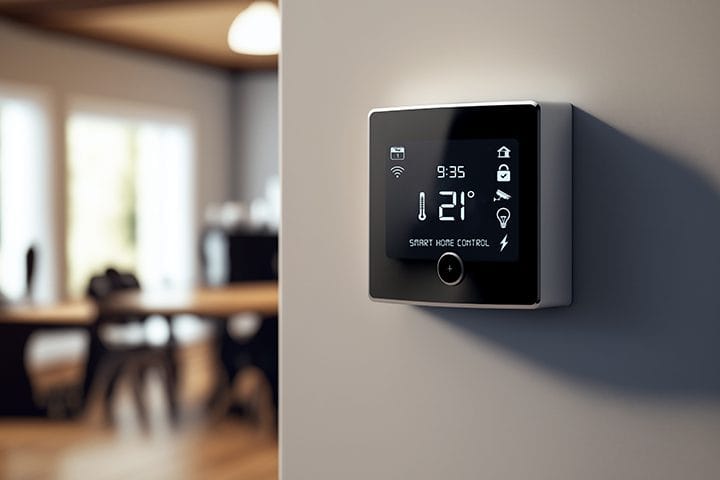
In the last few decades, the pace of digitalization has increased exponentially. Almost all sectors of the global economy have begun adopting digital tools and technologies to streamline their operations and enhance efficiency and productivity.
At the same time, advancements in semiconductor fabrication and consumer electronics manufacturing sectors have led to the development of new types of gadgets that can perform unique tasks beyond their basic functions when they are connected to the Internet.
Smart devices possess the capabilities to transmit and receive data from other similar equipment, thus creating a telecommunications network. Moreover, these tools are programmed to store and analyze the collected data, enabling them to interact with the user seamlessly.
Such advanced gadgets, specifically designed for residential spaces, are known as smart home devices.
Factors powering the smart home revolution
Typically, smart home devices are connected via a network such as Wi-Fi and are set up using wireless or hardwired systems. Some of the most common examples of ‘intelligent’ systems are smart TVs, smart LEDs, smart security solutions, and smart kitchen appliances.
Each of these tools and technologies can be operated remotely through mobile apps, thus enabling homeowners to control and track their performance in real-time.
In the last few decades, the increasing pace of industrialization and urbanization in developed and developing countries across the world has led to a surge in the disposable incomes of people living in metropolitan cities and industrial towns. As a result, there has been a growth in demand for advanced electronic devices that add convenience and comfort to their daily lives.
As per a survey done by YouGov, a UK-based data analytics company, around 10% of the households in the UK own at least two smart home products. These changing consumer preferences and purchasing patterns have impacted the smart home devices market positively in recent times.
In addition, the launch of 5G services globally has increased the penetration of Internet services around the world, thereby helping the sector flourish.
Advent of IoT Creating New Investment Opportunities in the Smart Home Devices Market
IoT in Smart Homes
One of the major developments witnessed in the past few years is the advent of Internet of Things (IoT) technology, which has enhanced the capabilities of smart home devices.
IoT refers to a network of physical objects like cars, TVs, buildings, and other such gadgets that allow them to communicate over the Internet. IoT-powered devices aid in automating most of the household chores, thus providing comfort and convenience.
Moreover, the development of voice assistants like Google Home and Amazon Echo has helped users to control the functioning of different appliances through voice commands, thereby making daily routines more efficient.
IoT in Enhancing Safety and Surveillance in Modern Houses
Most importantly, IoT-enabled smart home devices have improved the quality of security and surveillance systems installed in residential spaces.
The real-time surveillance features offered by these solutions assist users in monitoring their property seamlessly. Moreover, these devices can also be programmed to send alerts and notifications in case of any suspicious activity in the vicinity of the house.
Many consumer electronics companies have even developed smart home devices that automatically lock the door when residents leave, thereby ensuring comprehensive security at all times.
Moreover, these gadgets can be coupled with smoke or fire alarms to further upgrade the safety parameters of the house. The sensors embedded in IoT-powered smoke alarms alert homeowners to potential fires, thus helping them get out of their homes in case of emergencies.
Role of AI in the Growth of the Smart Home Device Industry
Recently, Allied Market Research published a report on the smart home device market, which highlighted that the industry accounted for $101.6 billion in 2022 and is expected to reach a sum of USD 707.2 billion by 2032, rising at a CAGR of 21.5% during 2023-2032.
One of the major factors influencing the growth of the sector in recent times is the growing integration of artificial intelligence and machine learning in smart home devices.
The ability of AI tools to collect and analyze vast volumes of data makes them ideal for enhancing the automation capabilities of these advanced gadgets.
NLP in Revolutionizing Smart Home Automation
The natural language processing techniques that are embedded in machine learning algorithms aid these systems in collecting data regarding behavioral patterns, preferences, habits, and daily routines of the residents.
This information is studied and analyzed to perform tasks like adjusting lighting settings and switching off kitchen appliances, thereby automating most of the manual work.
Moreover, many companies have designed smart HVAC systems with AI programs that automatically turn on or off based on the external environment and weather conditions.
AI-Powered Appliances in Transforming the Future of Smart Homes
Several multinational technology giants have invested heavily in the field of AI-powered smart devices to capitalize on the opportunities presented by the industry and expand their footprint globally. The launch of AI refrigerators, AI washing machines and dryers, and AI dishwashers has significantly expanded the scope of the smart home device industry.
The ML algorithms integrated in these appliances can diagnose their physical condition and detect any malfunctioning efficiently. Moreover, based on the usage patterns, these systems can also forecast the problems that are likely to disrupt their functioning in the future. Thus, the predictive maintenance capabilities offered by AI-enabled solutions aid in reducing repair and maintenance costs in the long run. ]
How AI devices cut energy use
Apart from convenience and security, smart home devices also help reduce the overall domestic power consumption. AI-powered appliances monitor energy usage and optimize their performance accordingly, thus promoting environmental sustainability.
The introduction of neural networks and reinforcement learning in these systems enabled them to efficiently manage energy distribution throughout the house. Recent advancements in cloud computing, data analytics, and near-field communication technologies have further improved the applicability of these devices.
In regions such as North America, Europe, and Asia-Pacific, adoption of smart home devices has increased exponentially owing to the fast-paced urban lifestyle of people in countries such as the U.S., the UK, Germany, China, India, Canada, and others. Moreover, smart city initiatives launched by governments in these countries have boosted the demand for these appliances, creating favorable conditions for the growth of the sector.
The Final Word
The rise of digitalization and the increase in penetration of Internet services have increased the utility of smart home devices in the last few years. In addition, the advent of Internet of Things technology and the adoption of AI-powered tools are expected to strengthen the position of the smart home devices market globally. Moreover, a rise in investments by multinational companies in innovative consumer electronics appliances is predicted to boost the revenue share of the industry in the coming period.
✍ **𝑨𝒓𝒕𝒊𝒄𝒍𝒆 𝒘𝒓𝒊𝒕𝒆𝒓: Akhilesh Prabhugaonkar

Akhilesh Prabhugaonkar holds a bachelor’s degree in Electronics Engineering from the reputed Vishwakarma Institute of Technology. He has a special interest in the fields of forensics, world history, international relations and foreign policy, sports, agriculture, astronomy, security, and oceanography. An ardent bibliophile and melophile, Akhilesh loves to write on topics of his interest and various other societal issues. This love for writing made him enter the professional world of content writing and pursue his career in this direction.







